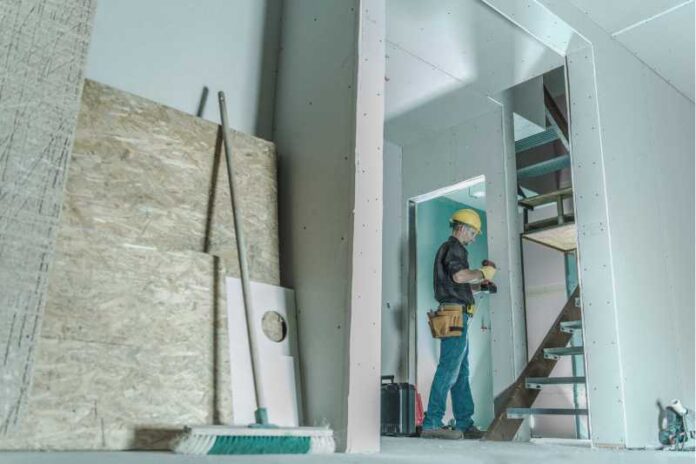
Structural building repair work is crucial for maintaining the safety, functionality, and aesthetics of a building. However, it often brings significant disruption to the daily lives of the building’s occupants.
This guide outlines strategies to minimize the impact on occupants during such repair projects, ensuring a balance between necessary construction activities and occupant comfort.
Why Is Structural Building Repair Work Necessary?
Structural repair work is not just about fixing visible damage; it’s a vital investment in the building’s longevity and safety. These repairs can address underlying issues, prevent future damage, and ensure the structure meets current building standards.
- Safety and Compliance: Regular repair work ensures the building remains safe for occupants and complies with updated building codes and regulations.
- Preventative Maintenance: Addressing minor issues before they escalate can save money and time in the long run, preventing more extensive, disruptive repairs.
- Structural Integrity: Repair work maintains the structural integrity of the building, ensuring it can withstand environmental stresses and wear over time.
- Aesthetics and Value: Beyond structural benefits, repairs can enhance the building’s appearance and increase its market value.
- Energy Efficiency: Many structural repairs include upgrading insulation and sealing leaks, improving the building’s energy efficiency and reducing utility costs.
How to Ensure Safety and Comfort of Occupants During Structural Building Repair Work
Ensuring the safety and comfort of occupants during repair work is paramount. Here are ways to achieve this:
- Detailed Planning and Scheduling: Plan repairs during off-peak hours or when the building is least occupied. This minimizes disruptions and ensures safety.
- Clear Communication: Keep occupants informed about the schedule, scope, and expected disruptions of repair work. Transparency builds trust.
- Noise and Dust Mitigation: Use noise barriers and schedule noisy tasks for specific times. Employ dust control measures like sealing off work areas and using air filters.
- Safety Measures: Implement stringent safety protocols, including signage, barriers, and designated safe zones to protect occupants from construction hazards.
- Alternate Facilities: Provide access to alternative facilities if repairs disrupt essential services like bathrooms or kitchens.
- Feedback Mechanism: Establish a feedback mechanism for occupants to voice concerns or issues during the repair process, allowing for timely adjustments.
4 Ways to Minimize Occupant Impact During Structural Building Repair Work
Reducing the impact on occupants requires thoughtful planning and effective management strategies:
- Advanced Notification and Ongoing Communication: Inform occupants well in advance of planned repairs and maintain open lines of communication throughout the project. Regular updates about progress and any changes to the schedule or scope can help manage expectations and reduce frustration.
- Phased Approach to Repair Work: Break down the repair project or any building painting work into manageable phases to limit disruption in any one area at a time. This approach allows for smoother operations and lessens the overall impact on daily activities within the building.
- Implement Strict Worksite Protocols: Enforce strict worksite rules for contractors, including designated entry and exit points, specific work hours to minimize noise during peak times, and cleanliness standards to reduce dust and debris in common areas.
- Provide Temporary Solutions: When repairs disrupt essential services, provide temporary access to facilities or services. For instance, if the kitchen area is under repair, consider setting up a temporary kitchen station elsewhere in the building.
FAQs
Ques:What are the best times to schedule repair work to minimize disruption?
Ans:: Schedule repairs during off-peak hours or periods of low occupancy, such as holiday breaks for schools or weekends for office buildings, to minimize disruption to occupants.
Ques: How can I effectively communicate repair plans and disruptions to occupants?
Ans: In Remedial Building Services work use multiple communication channels like emails, notice boards, and meetings to share detailed repair schedules, expected disruptions, and progress updates.
Ques: What measures can be taken to minimize dust and noise during repairs?
Ans: Utilize dust containment systems, schedule noisy tasks for specific times, and use modern, quieter tools and techniques to minimize noise.
Ques: What safety measures are in place to protect occupants during repairs?
Ans: Implement safety signage, physical barriers to separate work zones, and ensure all workers follow safety protocols to prevent accidents and ensure occupant safety.





